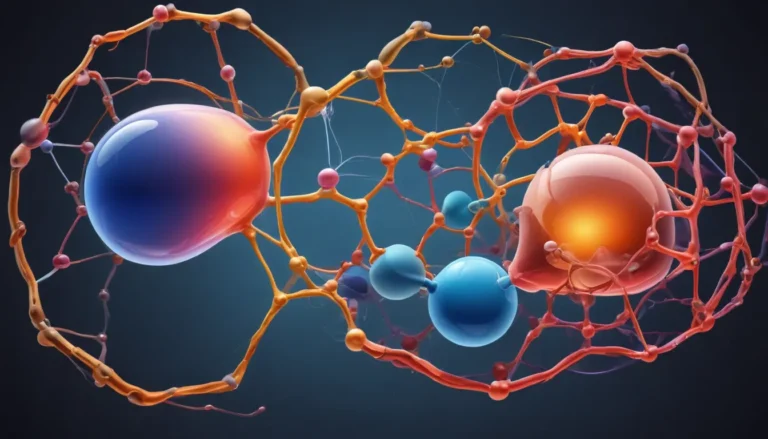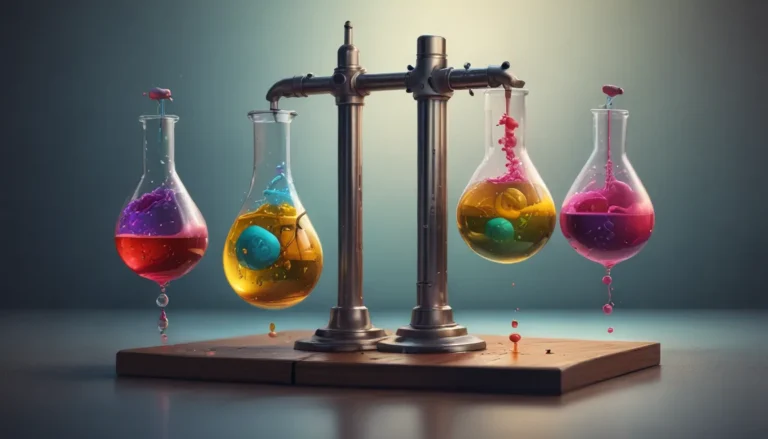A Note About Images: The images used in our articles are for illustration purposes only and may not exactly match the content. They are meant to engage readers, but the text should be relied upon for accurate information.
Chemistry is a field filled with wonders, and one of the most captivating phenomena it offers is autocatalysis. This self-sustaining chemical process has intrigued chemists and scientists for years, with its ability to accelerate reactions and lead to explosive growth. In this article, we will take a deep dive into the world of autocatalysis and explore 17 unbelievable facts that will surely spark your curiosity.
Understanding Autocatalysis: A Self-Sustaining Chemical Reaction
At its core, autocatalysis refers to a reaction in which one or more of the products act as a catalyst for the reaction itself, causing a rapid increase in the reaction rate. This unique quality sets autocatalysis apart from other chemical processes, making it a fascinating area of study in the field of chemistry.
The Role of Autocatalysis in Nature and Industry
Autocatalytic reactions can be found in various natural processes, such as enzyme reactions, DNA replication, and metabolic pathways. These reactions play a crucial role in biological systems, contributing to the complexity and dynamic behavior of living organisms.
Moreover, autocatalysis is not limited to the realm of biology. It is also utilized in industrial applications, particularly in the pharmaceutical and chemical industries, where it accelerates the production of desired products. The self-amplifying nature of autocatalysis can lead to explosive growth, making it a valuable tool for industrial processes.
Exploring the Intricacies of Autocatalytic Reactions
Autocatalysis can give rise to complex dynamic systems with emergent behaviors, such as chemical oscillations or pattern formation. This complexity stems from the positive and negative feedback loops that characterize autocatalytic reactions. Positive feedback loops amplify small perturbations, leading to non-linear dynamics, while negative feedback loops can inhibit the reaction under certain conditions.
The behavior of autocatalytic reactions is influenced by factors like temperature, concentration, and the presence of external catalysts. These variables can affect the rate and stability of the reaction, leading to variations in reaction pathways and outcomes.
The Significance of Autocatalysis in Scientific Research
Understanding autocatalysis is crucial for studying self-replicating systems, the origins of life, and the development of chemical networks. Autocatalytic reactions are believed to have played a vital role in the early stages of the formation of prebiotic chemical networks, contributing to the emergence of complexity.
Moreover, autocatalysis continues to inspire innovative research in various scientific fields, from organic chemistry to biochemistry. Its self-sustaining nature and ability to accelerate reactions offer unique opportunities for exploring novel chemical reactions and advancing our understanding of the natural world.
Unveiling the Mysteries of Autocatalysis: 17 Unbelievable Facts
- Autocatalysis is a self-sustaining chemical reaction that accelerates the production of reaction products through catalytic self-amplification.
- Autocatalytic reactions are found in various natural processes, including enzyme reactions, DNA replication, and metabolic pathways.
- Autocatalysis is utilized in industrial applications to accelerate the production of desired products in the pharmaceutical and chemical industries.
- Autocatalysis can lead to complex dynamic systems with emergent behaviors, such as chemical oscillations and pattern formation.
- Autocatalysis is a fundamental concept in the study of self-replicating systems and the origins of life.
- Autocatalysis can exhibit positive and negative feedback loops, leading to non-linear dynamics and inhibition under certain conditions.
- Autocatalytic reactions are influenced by temperature, concentration, and the presence of external factors, affecting the rate and stability of the reaction.
- Autocatalysis can exhibit bistability, with some systems existing in two stable states and the potential for switching between states.
- Autocatalysis plays a crucial role in the development of chemical networks and the emergence of complexity in biochemical systems.
- Autocatalysis can lead to explosive growth of reaction products due to its self-amplifying nature.
- Autocatalytic reactions can exhibit time-delayed dynamics and oscillatory behavior, adding a temporal dimension to the reaction process.
- Autocatalysis can occur in both homogeneous solutions and heterogeneous systems, resulting in a diverse range of catalytic phenomena.
- Autocatalysis and positive feedback are closely related, contributing to the amplification and maintenance of reaction rates.
- Autocatalytic reactions can be governed by complex networks of intermediates and multiple reaction pathways.
- Autocatalysis can be influenced by external factors, such as the presence of other catalysts or changes in pH.
- Autocatalysis continues to inspire innovative research in various scientific fields, offering unique opportunities for exploring novel chemical reactions.
- Autocatalysis is a fascinating field of study with wide-ranging applications, from understanding the origins of life to advancing scientific research.
Conclusion: Embracing the Wonders of Autocatalysis
In conclusion, autocatalysis is a remarkable chemical process that holds immense significance in the field of chemistry. From its role in biological processes to its applications in industrial settings, autocatalysis continues to captivate scientists and researchers worldwide. By understanding and harnessing the power of autocatalysis, we can unlock new possibilities for scientific exploration and innovation.
As we journey through the fascinating world of chemistry, let us celebrate the intricacies of autocatalysis and how it shapes our understanding of the natural world. Just as molecules dance in harmony to create life, autocatalysis showcases the beauty and complexity of chemical reactions that drive the mysteries of existence.
FAQs: Unveiling the Mysteries of Autocatalysis
-
What exactly is autocatalysis?
Autocatalysis is a self-sustaining chemical reaction in which a molecule acts as a catalyst for its own production, leading to exponential growth in the rate of the reaction. -
How is autocatalysis different from regular catalysis?
Regular catalysis involves a separate catalyst to enhance the rate of a reaction, while autocatalysis relies on the reaction product itself as the catalyst. -
What are some examples of autocatalytic reactions?
Examples of autocatalytic reactions include the Belousov-Zhabotinsky reaction, polymerization of acrylic acid, and autocatalytic oxidation of aldehydes. -
How is autocatalysis relevant in biological systems?
Autocatalytic reactions are fundamental in biochemical processes like enzyme kinetics, gene regulation, and protein phosphorylation, shaping the complexity of biological reactions. -
Can autocatalysis be used in industrial applications?
Yes, autocatalytic reactions have diverse industrial applications, including chemical synthesis, polymer production, and pharmaceutical manufacturing. -
Are there any downsides or risks associated with autocatalysis?
While autocatalysis offers many benefits, it can also lead to unwanted side reactions or instabilities if not carefully controlled. Understanding the limitations and conditions of autocatalysis is crucial in practical settings.
In the vast landscape of chemistry and biology, autocatalysis stands as a testament to the wonders of chemical processes. As we continue to explore the realms of chemical kinetics, feedback loops, and biochemistry, let us marvel at the intricate dance of molecules that shape our world and inspire us to unravel the mysteries of life itself.






